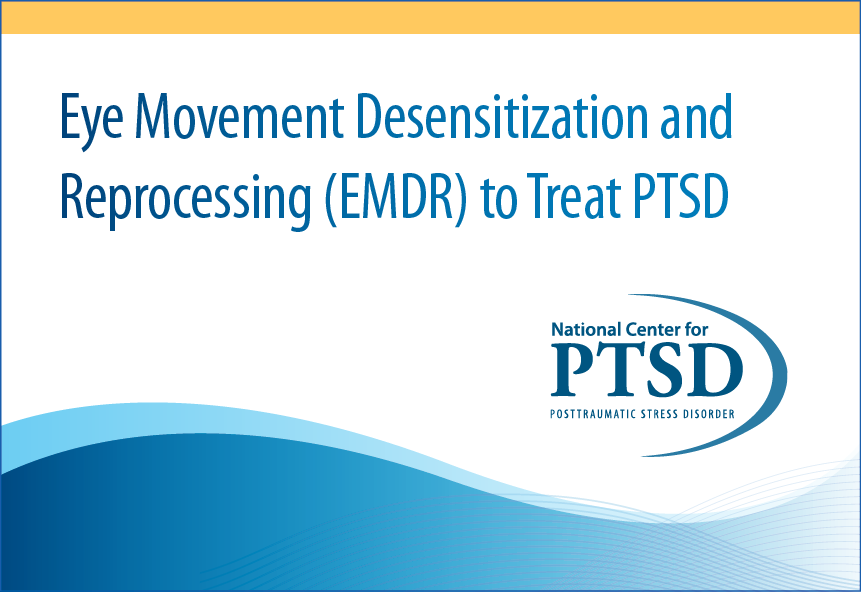PTSD: National Center for PTSD
Eye Movement Desensitization and Reprocessing (EMDR) to Treat PTSD
Continuing Education
This section brings together free in-depth Continuing Education resources for the Professional community concerned with trauma.
Eye Movement Desensitization and Reprocessing (EMDR) to Treat PTSD
- Date Created: 11/30/2022
- Time to Complete: 1 hour
- Credits: ANCC, APA, ASWB, ACCME, NBCC, Other Orgs
- Skill Level: Intermediate
- Course Series: PTSD 101, PTSD Consultation Lecture Series
 Author(s):
Author(s):
Description
Eye Movement Desensitization and Reprocessing (EMDR) is a standardized, trauma-focused psychotherapy for PTSD that aims to help patients resolve unprocessed traumatic memories. EMDR focuses directly on the trauma memory with the intention of changing the way the memory is stored in the brain. The EMDR model postulates that when this change occurs, distress, negative beliefs and physiological arousal related to the trauma memory are reduced.
EMDR is recommended as a first-line treatment for PTSD in numerous clinical practice guidelines. This course provides an overview of the evidence showing its effectiveness and reviews the 8-phase protocol and mechanisms of EMDR. Strategies and resources for including EMDR within shared decision-making are discussed with attention to military and cross-cultural considerations.
Goals and Objectives
- Describe the state of the research evaluating the effectiveness of EMDR in the treatment of PTSD
- List the core components of the EMDR standard protocol
- Identify at least 3 resources clinicians can use when introducing EMDR as a treatment option in shared decision-making


























